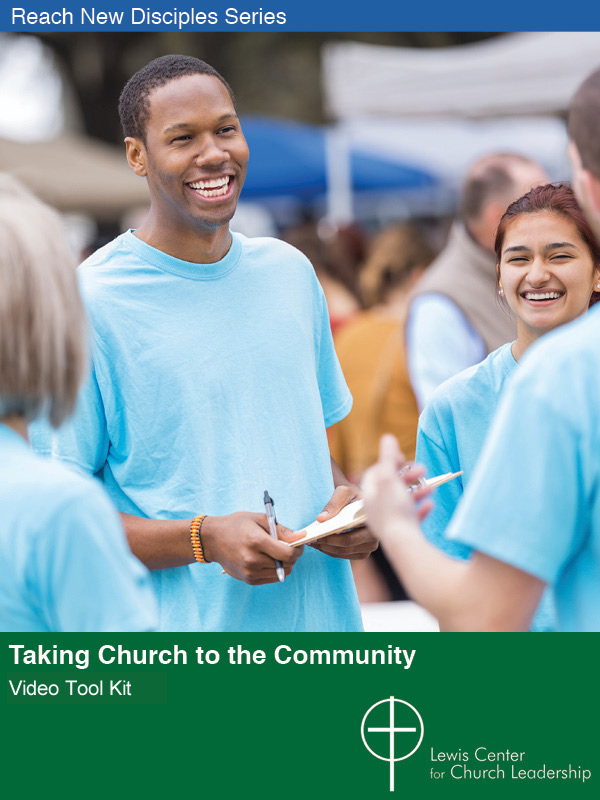Church leaders seeking to reach new people and help them grow need only look to the example of Jesus. Phil Maynard and Eddie Pipkin highlight how Jesus engaged people in ways that were personal and practical, intimate yet inclusive, and inspired by a compelling vision of God’s kingdom.
1. Jesus cast an extraordinary vision of God’s kingdom.
Jesus was a great teacher and often drew crowds that even our best and brightest preachers can only dream about. Jesus was casting an extraordinary vision of God’s kingdom. In a religious culture that had relegated kingdom life to a massive collection of rules and interpretations, Jesus proclaimed a way of life where God could be joyfully celebrated and intimately experienced. To a religious establishment that had put God in a box (quite literally, by way of the Holy of Holies), Jesus proclaimed a God available to the people, all the people, even the people the religious establishment had shut out.
2. Jesus poured himself into a small group of people.
While Jesus proclaimed the kingdom of God to vast crowds, he gathered a small group of men and women around him to disciple in the tradition of the rabbis of his day. It was this group that would be equipped by him to “turn the world upside down” as was said of them in Acts 17. They lived and traveled with Jesus. They received his instruction. They tried and failed and then tried again to do the things he did. They began to understand a kingdom that would find its fullness in servanthood and grace. And they were sent directly to do the work Jesus had begun.
It is interesting to note that while Jesus gathered the twelve disciples to do life together as a team, he also engaged even more deeply with a group of three — an inner circle if you will. Peter, James, and John are mentioned multiple times as a distinct subset within the original twelve disciples. When we think about discipleship in the church, it is often in the Paul-Timothy model (where a mature disciple partners with a novice) or in a programmatic approach to small group ministries. In many smaller congregations, the idea of creating small group ministries is daunting. But what if, instead, we were to focus on encouraging this model of triads to provide teaching, intimacy, discipling, and accountability? It was, after all, modeled by Jesus.
3. Jesus welcomed people from all walks of life.
From tax collectors to sinners, lepers to Sadducees, the infirm to prostitutes, Jesus engaged people who were different and often considered unacceptable. The Gospel message is not just for the righteous. As Jesus put it, “I have not come to call the righteous, but sinners” (Mark 2:17).
4. Jesus engaged people of all ages.
We love the heart of Jesus as he tells his disciples, “Let the little children come to me and do not hinder them, for the kingdom of heaven belongs to such as these” (Matthew 19:14). Jesus’ ministry was intergenerational. The children were intermixed in the multitudes and in the direct ministry of Jesus so that they might learn from him. Consider this in contrast to our programmatic approach of age-level ministry, as Johanna Myers notes in an article titled “Are You Teaching People about Faith? Or How to Practice It?” If our whole approach to disciple making is about educating people, age-level ministry becomes incredibly important because teaching a five-year-old is different than teaching a ten-year-old, a youth, or a young adult. But if the focus is on developing practices, it is important to learn from people who are skilled in the practices of faith. And interspersing the generations makes more sense than having everyone broken down into age-level ministry groupings.
5. Jesus tied his teaching to real life.
From the planting of seeds that would bring a great harvest, to the haul of great fish in the nets of the disciples, to the comparison of the kingdom to the leaven in bread, Jesus spoke in the language of the people and used examples to which they could relate. The stories he told most were generated by his bond with the people and the everyday life they experienced.
6. Jesus met people where they were on their journey to God.
It is abundantly clear that Jesus did not expect people to be ‘cleaned up’ before they could participate in the kingdom reality. He met them where they were, and he led them towards where he wanted them to be (sometimes gently and sometimes by offering a shock to their system). To the woman caught in the act of adultery, he says, “Go and sin no more” (John 8:11). To the expert in the law in the story of the Good Samaritan, Jesus says, “Now go and do the same” (Luke 10:37).
7. Jesus was a servant leader.
Everything Jesus did was for the people God loves. There was no gain, no prestige, no power to be gained from the people who were the focus of his ministry. He paid the ultimate price of selfless servanthood by laying down his life for his friends.
8. Jesus was a multiplier.
He modeled a significant mathematical truth about how disciples are made. Even though being fully God, Jesus took on our humanity and as Eugene Peterson puts it in The Message, “He moved into the neighborhood” (John 1:14). He chose to transform the world by engaging the world one-on-one. Jesus multiplied his discipling impact by making disciples who made disciples. Jesus sent them out to witness to the kingdom at hand and do the ministry he had modeled. Following his death, those disciples literally turned the world on its head as they, in turn, made disciples across the map.
These general observations about the way Jesus made disciples invite us to consider the techniques we might employ to help people become stronger disciples. One cannot miss the intimate nature of Jesus’ connection with those he discipled. The big group gatherings were focused on vision-casting. The equipping of disciples was very personal. It still is.
 Adapted from Disciple Like Jesus: Making Disciples Like Jesus Who Make Disciples Like Jesus by Phil Maynard and Eddie Pipkin, Market Square Books, 2020. Used by permission. The book is available at Market Square, Cokesbury, and Amazon.
Adapted from Disciple Like Jesus: Making Disciples Like Jesus Who Make Disciples Like Jesus by Phil Maynard and Eddie Pipkin, Market Square Books, 2020. Used by permission. The book is available at Market Square, Cokesbury, and Amazon.
Related Resources
- 4 Ways to Multiply Disciples the Way Jesus Did by Dave Ferguson and Warren Bird
- 5 Ways to Engage People the Way Jesus Did by Joe Daniels and Christie Latona
- Developing an Intentional Discipleship System by Junius B. Dotson







